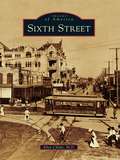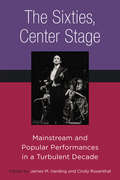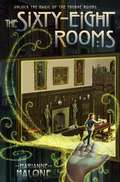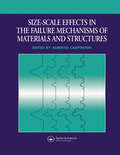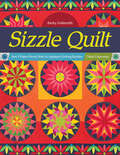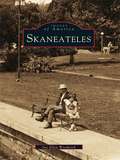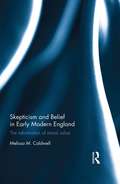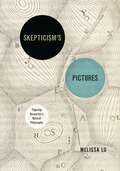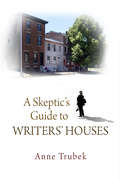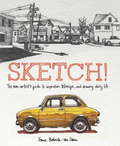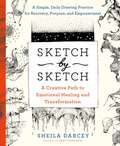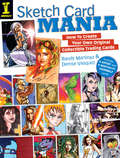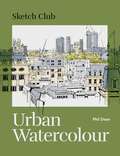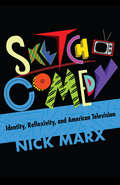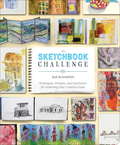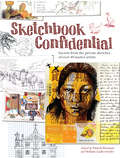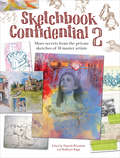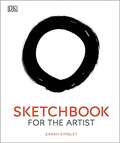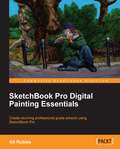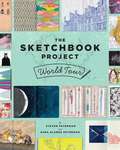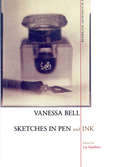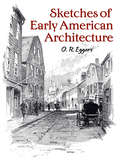- Table View
- List View
Sixth Street
by Allen ChildsNow listed in the National Register of Historic Places, Sixth Street began more than 170 years ago as the only level pathway into the town of Austin from the east. Originally called Pecan Street, throughout its history the street was also a level playing field for merchants and minorities, for moneyed dynasties and little mom-and-pop places. When Austin was a segregated society, Sixth Street was a standout exception where people of all races lived and worked. By 1871, the arrival of the railroad kindled the explosive development of Pecan Street into Austin's first mercantile center. It was home to Austin's first hotel, Bullock's at Congress Avenue and Pecan Street; the first fight with the government of the new Republic of Texas; and the first brothel. In the 1970s, the commercial district suffered some deterioration. Then, as it has done before, Sixth Street was reborn, this time as the Sixth Street Historic Entertainment District. Loved by Austin residents and visitors alike, Sixth Street is Texas's most famous thoroughfare.
The Sixties, Center Stage: Mainstream and Popular Performances in a Turbulent Decade
by Cindy Rosenthal James M. HardingThe Sixties, Center Stage offers rich insights into the innovative and provocative political underpinnings of mainstream and popular performances in the 1960s. While much critical attention has been focused on experimental and radical theater of the period, the essays confirm that mainstream performances not only merit more scholarly attention than they have received, but through serious examination provide an important key to understanding the 1960s as a period. The introduction provides a broad overview of the social, political, and cultural contexts of artistic practices in mainstream theater from the mid-fifties to mid-seventies. Readers will find detailed examinations of the mainstream’s surprising attention to craft and innovation; to the rich exchange between European and American theatres; to the rise of regional theaters; and finally, to popular cultural performances that pushed the conceptual boundaries of mainstream institutions. The book looks afresh at productions of Hair, Cabaret, Raisin in the Sun, and Fiddler on the Roof, as well as German theater, and performances outside the Democratic National Convention of 1968.
The Sixty-Eight Rooms (The Sixty-Eight Rooms Adventures #1)
by Marianne MaloneRuthie thinks nothing exciting will ever happen to her until her sixth-grade class visits the Art Institute of Chicago, where she and her best friend Jack discover a magic key that shrinks them to the size of gerbils and allows them to explore the Thorne Room, which houses miniature rooms from various time periods and places.
Size-Scale Effects in the Failure Mechanisms of Materials and Structures
by Alberto CarpinteriInvited international contributions to this exciting new research field are included in this volume. It contains the specially selected papers from 45 key specialists given at the Symposium held under the auspices of the prestigious International Union of Theoretical and Applied Mechanics at Turin in October 1994.
Sizzle Quilt
by Becky GoldsmithPut the Sizzle back into your quilting life! Make striking quilts designed by Becky Goldsmith that use the colors you love. Select one of two gorgeous colorways - warm (reds, oranges, and yellows) or cool (blues and greens) and begin your perfect paper-pieced quilt. Sew each quilt to make 9 paper-pieced 16-point stars with an appliqué border to create a modern, fun look guaranteed to brighten any room. Comes with multiple techniques that make this an invaluable learning tool, as well! Create stunning and precise stars with perfect corners using paper piecing From best-selling author and designer Becky Goldsmith, one half of the longtime design duo Piece O’ Cake Designs Bold and modern look made easy with simple construction instructions
Skaneateles
by Sue Ellen WoodcockIt is known as one of the most beautiful and cleanest lakes around, and for years Skaneateles Lake and the town of Skaneateles have served as the eastern gateway to the Finger Lakes, drawing visitors from all over the world. The beauty of the lake is enhanced by the well-kept village and town, which line its shores. Many of the early homes and buildings have been well maintained and are recognizable today. From the mid-1800s to the 1970s, the town changed little from when it was first settled in 1794.With sailboats and steamships, old views of the village and of school days of yore, Skaneateles recalls the people, places, and events that made a difference. Included are people such as John D. Barrow and Clarence Austin, places such as the Glen Haven Water Cure and the Packwood House, and events such as Bobby Kennedy's visit and Microd racing. Skaneateles also recalls the City of Syracuse and the town's great history of steamships, sailing and boating, and early industries.
Skateboarding and Femininity: Gender, Space-making and Expressive Movement (Routledge Advances in Theatre & Performance Studies)
by Dani AbulhawaSkateboarding and Femininity explores and highlights the value of femininity both within skateboarding and wider culture. This book examines skateboarding’s relationship to gender politics through a consideration of the personal politics connected to individual skateboarders, the social-spatial arenas in which skateboarding takes place, and by understanding the performance of tricks and symbolic movements as part of gender-based power dynamics. Dani Abulhawa anaylses the discursive frameworks connected to skateboarding philanthropic projects and how these operate through gendered tropes. Through the author’s work with skateboarding charity SkatePal, this book offers an alternative way of recognising the value of skateboarding philanthropy projects, proposing a move toward a more open and explorative somatic practice perspective.
Skepticism and Belief in Early Modern England: The Reformation of Moral Value
by Melissa M. CaldwellThe central thesis of this book is that skepticism was instrumental to the defense of orthodox religion and the development of the identity of the Church of England. Examining the presence of skepticism in non-fiction prose literature at four transitional moments in English Protestant history during which orthodoxy was challenged and revised, Melissa Caldwell argues that a skeptical mode of thinking is embedded in the literary and rhetorical choices made by English writers who straddle the project of reform and the maintenance of orthodoxy after the Reformation in England. Far from being a radical belief simply indicative of an emerging secularism, she demonstrates the varied and complex appropriations of skeptical thought in early modern England. By examining a selection of various kinds of literature-including religious polemic, dialogue, pamphlets, sermons, and treatises-produced at key moments in early modern England’s religious history, Caldwell shows how the writers under consideration capitalized on the unscripted moral space that emerged in the wake of the Reformation. The result was a new kind of discourse--and a new form of orthodoxy--that sought both to exploit and to contain the skepticism unearthed by the Reformation.
Skepticism’s Pictures: Figuring Descartes’s Natural Philosophy
by Melissa LoIn seventeenth-century northern Europe, as the Aristotelian foundations of scientia were rocked by observation, experiment, confessional strife, and political pressure, natural philosophers came to rely on the printed image to fortify their epistemologies—and none more so than René Descartes. In Skepticism’s Pictures, historian of science Melissa Lo chronicles the visual idioms that made, sustained, revised, and resisted Descartes’s new philosophy.Drawing on moon maps, political cartoons, student notebooks, treatises on practical mathematics, and other sources, Lo argues that Descartes transformed natural philosophy with the introduction of a new graphic language that inspired a wide range of pictorial responses shaped by religious affiliation, political commitment, and cultural convention. She begins by historicizing the graphic vocabularies of Descartes’s Essais and Principia philosophiae and goes on to analyze the religious and civic volatility of Descartes’s thought, which compelled defenders (such as Jacques Rohault and Wolferd Senguerd) to reconfigure his pictures according to their local visual cultures—and stimulated enemies (such as Gabriel Daniel) to unravel Descartes’s visual logic with devastating irony. In the epilogue, Lo explains why nineteenth-century French philosophers divorced Descartes’s thought from his pictures, creating a modern image of reason and a version of philosophy absent visuality.Engaging and accessible, Skepticism’s Pictures presents an exciting new approach to Descartes and the visual reception of seventeenth-century physics. It will appeal to historians of early modern European science, philosophy, art, and culture and to art historians interested in histories that give images their argumentative power.
A Skeptic's Guide to Writers' Houses
by Anne TrubekThere are many ways to show our devotion to an author besides reading his or her works. Graves make for popular pilgrimage sites, but far more popular are writers' house museums. What is it we hope to accomplish by trekking to the home of a dead author? We may go in search of the point of inspiration, eager to stand on the very spot where our favorite literary characters first came to life--and find ourselves instead in the house where the author himself was conceived, or where she drew her last breath. Perhaps it is a place through which our writer passed only briefly, or maybe it really was a longtime home--now thoroughly remade as a decorator's show-house.In A Skeptic's Guide to Writers' Houses Anne Trubek takes a vexed, often funny, and always thoughtful tour of a goodly number of house museums across the nation. In Key West she visits the shamelessly ersatz shrine to a hard-living Ernest Hemingway, while meditating on his lost Cuban farm and the sterile Idaho house in which he committed suicide. In Hannibal, Missouri, she walks the fuzzy line between fact and fiction, as she visits the home of the young Samuel Clemens--and the purported haunts of Tom Sawyer, Becky Thatcher, and Injun' Joe. She hits literary pay-dirt in Concord, Massachusetts, the nineteenth-century mecca that gave home to Hawthorne, Emerson, and Thoreau--and yet could not accommodate a surprisingly complex Louisa May Alcott. She takes us along the trail of residences that Edgar Allan Poe left behind in the wake of his many failures and to the burned-out shell of a California house with which Jack London staked his claim on posterity. In Dayton, Ohio, a charismatic guide brings Paul Laurence Dunbar to compelling life for those few visitors willing to listen; in Cleveland, Trubek finds a moving remembrance of Charles Chesnutt in a house that no longer stands.Why is it that we visit writers' houses? Although admittedly skeptical about the stories these buildings tell us about their former inhabitants, Anne Trubek carries us along as she falls at least a little bit in love with each stop on her itinerary and finds in each some truth about literature, history, and contemporary America.
Sketch!
by France Belleville-Van StoneAn inspirational manual for integrating sketching into daily life for artists and non-artists alike. Urban sketching--the process of sketching on the go as a regular practice--is a hot trend in the drawing world. In this aspirational guide, French artist France Belleville-Van Stone offers motivation to move beyond the comfort zone, as well as instruction on turning rough sketches into finished work. By sharing her own creative process, which includes sketching by hand and digitally, Belleville-Van Stone emboldens readers to craft a method of their own and devote more time to art, even if it's just 10 minutes a day. Sketch will inspire artists both established and aspiring to rethink their daily practice, sketch for the pure joy of it, and document their lives and the world around them.From the Trade Paperback edition.
Sketch by Sketch: A Creative Path to Emotional Healing and Transformation (A SketchPoetic Book)
by Sheila DarceyTransform your life, process your emotions, and find joy in Sheila Darcey's Sketch by SketchDuring a difficult time in her life, author Sheila Darcey found that the act of sketching and freestyle drawing—of giving a physical form to her thoughts, emotions and ideas—was an impactful way to process what she was feeling. One simple sketch became a daily practice and developed into a meditative and therapeutic tool that Sheila has taught and shared with thousands of people. Sketch by Sketch will help you create a daily sketching practice that shifts you from negative thinking and spiraling emotions into the realm of possibility. By using art to connect your left brain with your right brain, Sketch by Sketch will unlock your basic human need to create, express, and feel—regardless of whether or not you think of yourself as an artist. In Sketch by Sketch, you’ll find over 40 sketching prompts on a variety of topics from hope to stillness that will help you connect with your emotions, practice mindfulness, and negotiate change. With each drawing you'll find you are able to process your experiences in a powerful new way. Step by step, sketch by sketch, you'll find peace, creativity, and healing on the page.
Sketch Card Mania: How To Create Your Own Original Collectible Trading Cards
by Randy Martinez Denise VasquezIn this age of digital everything, presenting someone with an original, hand-drawn piece of art makes a big impression. So it's no wonder sketch cards (trading cards featuring one-of-a-kind artwork) are such a sensation. Packed with cool examples from various artists, Sketch Card Mania shows you how to create your own personal and professional-looking cards with guidance from long-time veteran of the trading card industry Randy Martinez.Basic technique instruction for sketching in pencil, colored pencil, pen and ink, colored markers, acrylic, watercolor and mixed mediaThe mechanics of designing and constructing sketch cards, from what to include on the back to printing, cutting and mounting them just right20 step-by-step demonstrations featuring a range of styles and subjects - heroes, villains, athletes, aliens, wizards, elf warriors and moreExpert tips for connecting with other artists, promoting yourself and sharing your work onlinePlus awesome inside tips on breaking into the business from five industry professionalsWhether your goal is to generate fans, get commissions or just have fun, this book will show you how to make stand-out cards that really say something about you as an artist.
Sketch Club: Urban Watercolour
by Phil Dean***Take your urban sketching skills to the next level with watercolour. Bestselling author and artist Phil Dean (@shoreditchsketcher) provides a step-by-step guide to creating beautiful urban artworks. Get started with the very basics of depicting cityscapes with a pencil or pen, including tips on perspective, measuring, and mark-making. Then move straight on to the core watercolour techniques you will need to introduce stunning colour and tone to your sketches.With 20 easy-to-follow exercises on everything from negative space to line & wash, Sketch Club: Urban Watercolour is your go-to guide to elevating your urban art. Chapters include:- Loosening Up- Urban Drawing 101- Getting Started with Watercolour- Taking Your Watercolour Further- Finishing Touches
Sketch Club: Urban Watercolour
by Phil Dean***Take your urban sketching skills to the next level with watercolour. Bestselling author and artist Phil Dean (@shoreditchsketcher) provides a step-by-step guide to creating beautiful urban artworks. Get started with the very basics of depicting cityscapes with a pencil or pen, including tips on perspective, measuring, and mark-making. Then move straight on to the core watercolour techniques you will need to introduce stunning colour and tone to your sketches.With 20 easy-to-follow exercises on everything from negative space to line & wash, Sketch Club: Urban Watercolour is your go-to guide to elevating your urban art. Chapters include:- Loosening Up- Urban Drawing 101- Getting Started with Watercolour- Taking Your Watercolour Further- Finishing Touches
Sketch Comedy: Identity, Reflexivity, and American Television
by Nick MarxA history of sketch comedy on American television and analysis of what it says about American culture and society.In Sketch Comedy: Identity, Reflexivity, and American Television, Nick Marx examines some of the genre’s most memorable?and controversial?moments from the early days of television to the contemporary line-up. Through explorations of sketches from well-known shows such as Saturday Night Live, The State, Inside Amy Schumer, Key & Peele, and more, Marx argues that the genre has served as a battleground for the struggle between comedians who are pushing the limits of what is possible on television and network executives who are more mindful of the financial bottom line. Whether creating new catchphrases or transgressing cultural taboos, sketch comedies give voice to marginalized performers and audiences, providing comedians and viewers opportunities to test their own ideas about their place in society, while simultaneously echoing mainstream cultural trends. The result, Marx suggests, is a hilarious and flexible form of identity play unlike anything else in American popular culture and media.“An excellent study of a long-neglected area in television/media studies and is part of a larger turn toward the centrality of comedy in post-war U.S. culture.” —Jeffrey Sconce, Northwestern University“A stalwart of television . . . sketch comedy finally gets the in-depth critical attention it deserves . . . Marx shows how sketch comedy has fit (and been constrained by) TV’s industrial contexts, from live variety shows in its earliest days to movement across media in the era of multiple platforms. These case studies not only chart sketch comedy’s past, they provide the theoretical and analytical tools to consider its future.” —Ethan Thompson, Texas A&M University Corpus Christi
Sketch Comedy: Identity, Reflexivity, and American Television
by Nick MarxA history of sketch comedy on American television and analysis of what it says about American culture and society.In Sketch Comedy: Identity, Reflexivity, and American Television, Nick Marx examines some of the genre’s most memorable?and controversial?moments from the early days of television to the contemporary line-up. Through explorations of sketches from well-known shows such as Saturday Night Live, The State, Inside Amy Schumer, Key & Peele, and more, Marx argues that the genre has served as a battleground for the struggle between comedians who are pushing the limits of what is possible on television and network executives who are more mindful of the financial bottom line. Whether creating new catchphrases or transgressing cultural taboos, sketch comedies give voice to marginalized performers and audiences, providing comedians and viewers opportunities to test their own ideas about their place in society, while simultaneously echoing mainstream cultural trends. The result, Marx suggests, is a hilarious and flexible form of identity play unlike anything else in American popular culture and media.“An excellent study of a long-neglected area in television/media studies and is part of a larger turn toward the centrality of comedy in post-war U.S. culture.” —Jeffrey Sconce, Northwestern University“A stalwart of television . . . sketch comedy finally gets the in-depth critical attention it deserves . . . Marx shows how sketch comedy has fit (and been constrained by) TV’s industrial contexts, from live variety shows in its earliest days to movement across media in the era of multiple platforms. These case studies not only chart sketch comedy’s past, they provide the theoretical and analytical tools to consider its future.” —Ethan Thompson, Texas A&M University Corpus Christi
The Sketchbook Challenge: Techniques, Prompts, and Inspiration for Achieving Your Creative Goals
by Sue BleiweissHave you ever bought a new sketchbook, opened to the first page, and thought, "Now what do I do?" Sue Bleiweiss and the talented minds behind The Sketchbook Challenge are here to help. Imagine a supportive community of artists sharing the innermost pages of their sketchbooks and offering you tips and techniques for overcoming creative blocks. That's what The Sketchbook Challenge is all about, and the popular blog of the same name has already inspired thousands. Inside this book, you'll find: · Themes that will motivate you to start your sketchbook--and, more important, keep at it · Tutorials spotlighting such mixed-media techniques as thread sketching, painted papers for collage, digital printing, and much more · Strategies to get off the sketchbook page and start creating inspired art--whether you're into painting, collage, fiber art, or beyond. · In-depth profiles of artists who have taken the Sketchbook Challenge and used it as a launching pad for their own meaningful artwork
Sketchbook Confidential: Secrets from the private sketches of over 40 master artists
by Editors of North Light BooksPulsing with ideas, energy and inspiration, Sketchbook Confidential offers a rare peek inside the personal sketchbooks of 40+ master artists. From colorful painted sketches to spontaneous napkin doodles, from the intensely personal to the purely whimsical, most of the work here was produced quickly and never intended for public view. It is honest and immediate, fresh and fearless.In their own words, the artists share the intentions and inspirations behind their sketching. For some, it is a cherished, everyday habit - a way of wandering through the ideas in their mind, playing around with new subjects, or just having some anything-goes kind of fun. For others, sketching is a deliberate tool for problem-solving - working through a composition, capturing a moment's light or test-driving a color scheme.As you turn the pages you'll be immersed in the creative processes of these individuals, arriving on the other side with a feeling of kinship and a renewed desire to boldly capture life in your own sketchbooks!
Sketchbook Confidential 2: Enter the secret worlds of 41 master artists
by Pamela Wissman Stefanie LaufersweilerMore secrets from the private sketches of 38 master artists The idea may be derived from anything really--a flash of sunlight, the tilt of a head, a glass on the table...but the sketch is where it all begins, the point where inspiration meets artist. Gloriously free of the need to get it "right," the sketch is where possibilities are explored, compositions are found, and visions come to life. A brilliant follow-up to the first Sketchbook Confidential, this book grants you access to 38 of art's most creative minds via their sketchbooks. Whether created in studios, subways or the middle of a farmyard, these sketches represent art in its raw form. Up until now, this work has been tucked inside drawers or on studio bookshelves. Now the artists lay it out for all to see, along with intimate musings on the art of sketching and how it helps them commune with a subject, find their path to a finished piece or discover even greater rewards in the journey itself.
Sketchbook For The Artist: An Innovative, Practical Approach To Drawing The World Around You
by Sarah SimbletDevelop your drawing skills and rediscover the world around you with this innovative and beautifully illustrated book. In Sketch Book for the Artist, acclaimed artist and teacher Sarah Simblet teaches you how to draw by combining practical lessons with examples of both her own work and some of the world's greatest drawings. She introduces all the key drawing materials, then shows you how to master the basic elements of drawing in a series of step-by-step drawing classes, covering topics ranging from simple mark-making to establishing form, creating tone, and conveying perspective. You will learn how to explore a wide variety of subjects, from still life, plants, and animals to portraits, the human body, landscapes, and buildings, all of which are introduced with outstanding drawings by famous artists. The bestselling author of Anatomy for the Artist and Botany for the Artist, Sarah demonstrates how she works - from quick pencil sketches to pen and ink studies - with expertise and plenty of encouraging tips, and complements them with plentiful examples from her own drawing books. Sketch Book for the Artist is for anyone who wants to draw, whether you are a complete beginner or would like to refresh your existing skills. Whatever your ability, it will inspire you to reach for a pencil and paper and start drawing.
Sketchbook Pro Digital Painting Essentials
by Gil RoblesThis book is an example-based guide that will help you create professional grade paintings using Sketchbook Pro. As you progress from one chapter to another, you will learn how to virtually draw visually stunning paintings that are digitally drawn but look exactly like orthodox artwork.If you have had prior experience in developing digital artwork and are looking to add to your knowledge, Sketchbook Pro Digital Painting Essentials is a guide that will help you seamlessly translate what you do with traditional media to digital media.
The Sketchbook Project World Tour
by Steven Peterman Shane ZuckerDestined to go down as one of the era's most astonishing global art projects, the Brooklyn Art Library's Sketchbook Project has, in less than a decade, amassed more than thirty thousand sketchbooks submitted by people of all ages and artistic abilities from more than 130 countries. Bursting with color, vivid imagery, and bouts of whimsy mixed with deeply intimate insights, the sketchbooks capture the texture of personal experience in a dizzying variety of illustrative styles and layouts that run the gamut from street portraits to stream-of-consciousness doodles, comics, and pop-ups. The Sketchbook Project World Tour presents the most compelling, surprising, and visually stunning examples from this one-of-a-kind artistic treasury.
Sketches In Pen And Ink: A Bloomsbury Notebook
by Vanessa BellVanessa Bell, artist, sister of Virginia Woolf, wife of Clive Bell and lover of Duncan Grant, is one of the most fascinating and modern figures of the Bloomsbury set, but unlike most of them she rarely put pen to writing paper. When she did, she was witty and illuminating about their early lives. The eldest of the Stephen family, she grew up with Virginia in Victorian gloom at Hyde Park Gate and later blossomed in bohemian style in Bloomsbury. From the twenties to the forties she lived and painted at Charleston Farmhouse like a heroine of the sixties and seventies, at the centre of a colourful world of family, friends, artists and intellectuals. Sketches in Pen and Ink is a unique collection of largely unpublished memoirs - most of them written to be read at meetings of the Memoir club, in which Vanessa writes with wit and charm about herself, her childhood, her remarkable family and friends, her moving relationship with Roger Fry, and her art. Her daughter, Angelica Garnett, has written a vivid and personal introduction which adds considerably to our understanding of this extraordinary woman and artist.
Sketches of Early American Architecture
by William H. Crocker O. R. EggersThese 53 magnificent drawings by a distinguished architect recapture landmarks of colonial America. Originally published in 1922, Otto Reinhold Eggers' portfolio of pencil sketches depicts historic structures in New York, Philadelphia, Boston, and Baltimore as well as those of smaller towns in Connecticut, Virginia, and elsewhere. Images of churches, municipal structures, homes, and other architectural gems range from the majesty of St. Paul's Chapel, Manhattan's oldest surviving church, and the grandeur of George Washington's Mt. Vernon residence to a Dutch farmhouse in New Jersey and a Newport street lined with quaint eighteenth-century buildings.Otto Reinhold Eggers (1882 - 1964) was one of the architects of the Jefferson Memorial in Washington, D. C., and his seven-decade career in architecture included a 30-year association with John Russell Pope, first as a draftsman and eventually as a partner. Eggers' meticulously rendered sketches, photographic in their detail and effect, offer fascinating perspectives on some of America's architectural treasures. Extensive captions for each of the illustrations by William H. Crocker, editor of The American Architect, provide fascinating historical background.
